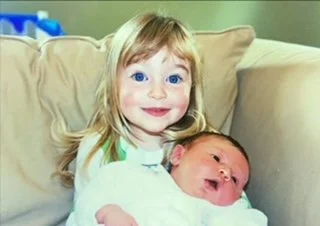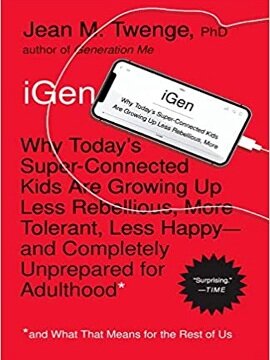Questions by Val Walker
Answers by Sarah Merrill
Sarah is a personal historian and owner of Merrill Memoirs (www.memoirsbymerrill.com). Since 2010, she has been assisting individuals, families and small businesses in recounting, recording, and preserving their stories. Sarah works with a talented genealogist to complete family research, and she contracts with a professional book designer to present her clients’ stories and photographs in beautiful books. She also teaches memoir writing workshops and serves as an editor for people writing their own memoirs of family histories.
Sarah earned her undergraduate degree with high honors in literature and creative writing at Middlebury College, Vermont, and completed graduate work in oral history and nonfiction writing at the Salt Institute for Documentary Studies in Maine. She spent ten years in journalism before launching her personal history business.
Introduction
Have you ever engaged in a leisurely conversation with someone who not only listened to your story, but was fascinated in every bit of it? Indeed, your listener beckoned you to unearth memories that perhaps you had not thought about in years?
Sarah Merrill is this kind of listener. With genuine curiosity, she invites you to dive into all the details of a life story and discover the long-forgotten treasures that may have been buried for decades. With Sarah, your story’s details are for excavating, examining, saving, and savoring. And later, after selecting your stories, she artfully crafts a narrative of your life to create a memoir or a family history book, or more loosely, a collection of personal stories on a beloved topic. This intricate and complex work is generally what a personal historian such as Sarah does. Experienced personal historians combine the expertise of active listening, archiving of artifacts, genealogy, narrative writing, ghost-writing, book production, self-publishing, and more.
In the following interview with Sarah, I hope to introduce readers to the vital work field of personal history.
Val: A personal historian needs to be talented at writing as well as adept at engaging people and listening--and yet, needs to be impeccably accurate and organized. This is a very particular mix of gifts to have. How did you get started at this?
My interest in collecting stories and memories actually started when I was just a kid. I seem to have been born nostalgic! I always kept diaries and scrapbooks and saved every letter I ever received. I also was very enamored of my grandparents. I really wish I’d been enlightened enough to record their stories while they were still here. This is one of my regrets and part of what powered my inspiration to become a personal historian. In addition to being a collector and memory keeper, I was a storyteller. I read a great deal and I wrote stories all the time. I studied fiction writing in college and those skills are absolutely employed when I’m writing memoir and family history. In addition to accuracy, an important goal is for the narrative to be an engaging read!
Val: Could you tell me more about what is involved when you listen to peoples’ stories in your work? How do you get them to relax and delve into their recollections with such vivid detail?
As personal historians, we are very client focused in our work. Listening is about building trust. Trust is key. This means I don’t want to force the narrative or push someone to get to the point. Instead, I gently allow them to discover and explore as they travel back in time. I often spend upwards of eight hours with my clients, spread over a few days, so they have ample time to cover a lot of ground. In telling their stories freely, without trying to meet any external criteria, my clients have the control, they choose what to share. In some cases, the experience of sharing a story can be enlightening as well as enriching. And sometimes, they’ll tell a story just to get it off their chest, but then decide not to include it in the final product.
Val: This reminds me of an important technique in psychology and counseling, developed by Alfred Adler. Adlerian approaches are invested in early childhood recollections and how we find meaning and wisdom in these old narratives.
I believe at different times in our lives, we can revisit our stories and discover new takeaways by seeing details or patterns we’d never noticed. We can look at a relationship over time and see patterns or healing. We can even look at a trauma in new ways and sometimes find healing. It’s important to point out that I am not anything like a therapist. I’m more like a guide on a journey of life review. And life review has many, many benefits. Though some topics may be too difficult, and I always let people know it is completely fine to leave them out.
Val: It sounds deeply meaningful to help people value their stories as history.
“One of my clients getting a first look at her family history book. In this case, this was the third book I produced with her.”—Sarah Merrill
My work is rewarding on multiple fronts. We can help clients understand the impact of peoples’ struggles and challenges in their families over the decades. In reviewing our life stories, we can sometimes more clearly see the influences that people have had on us, on our families, our communities over time. We can see the impact we’ve had on others around us. We can see our own challenges from a new perspective. Our children and grandchildren can be enriched by what our family members have faced and battled through generations.
Val: Is the field of personal history becoming more popular?
The field of personal history is still not well known—not yet, really. But fortunately, interest in the field of genealogy has greatly increased in recent years. And in the first year or so of the pandemic, people had more time to reflect. Folks pulled out photo albums or downloaded a genealogy app. The interest in genealogy has sparked people to learn more about their ancestors and families and has helped lead them to the field of personal history and writing memoirs. But there is a significant difference between genealogy and personal history. Certainly, personal history complements and includes genealogy. I work closely with a genealogist in my business.
Val: When did you actually discover there was such a thing as personal history and give yourself a professional name, “personal historian?”
At some point, I was aware that I wanted to work with individuals and families to record their stories, but I did not know there was a field called “personal history” or that others were already doing this. I’d volunteered in a nursing home helping elders write their memoirs and it struck me then how rewarding it was. Especially visiting these fairly isolated and lonely elders and actively listening to them, taking an interest in their lives.
Around 12 years ago, when I was working as a journalist and a medical writer, I learned through a newspaper article of a man who was working as a personal historian – and it all just clicked into place. He was gracious enough to meet with me and discuss his business model. And from there, my dream gradually became a reality. I slowly built my business as a professional personal historian with my company Merrill Memoirs. I’ve been doing it full time for about 10 years and have written dozens of memoirs and family histories.
Val: What types of people come to you for your services?
I’m either hired by the individual themselves – typically aged 60 to 100 – or by their adult children or their grandchildren, who want the stories recorded. People are realizing they need to get their loved one’s stories recorded before they are gone. Sometimes, the older generations may be reluctant to be the center of attention like this. I sometimes hear, “Why would anyone want my stories? I’m not interesting!” But truly, once they begin the story sharing process, they realize how wonderful it can be. I often have people express disappointment when our interviews are completed.
Further Reading
To learn more about Sarah Merrill and her services: www.memoirsbymerrill.com
To learn more about personal historians in the Northeastern US: Personal Historians Northeast Network www.phnn.org
Val Walker is a contributing blogger for Psychology Today and the author of 400 Friends and No One to Call, released in 2020 with Central Recovery Press. Her first book, The Art of Comforting (Penguin/Random House, 2010), won the Nautilus Book award and was recommended by the Boston Public Health Commission as a guide for families impacted by the Boston Marathon Bombing. Val received her MS in rehabilitation counseling from Virginia Commonwealth University and is a rehabilitation consultant, speaker, and educator. Keep up with Val at www.ValWalkerAuthor.com
















































